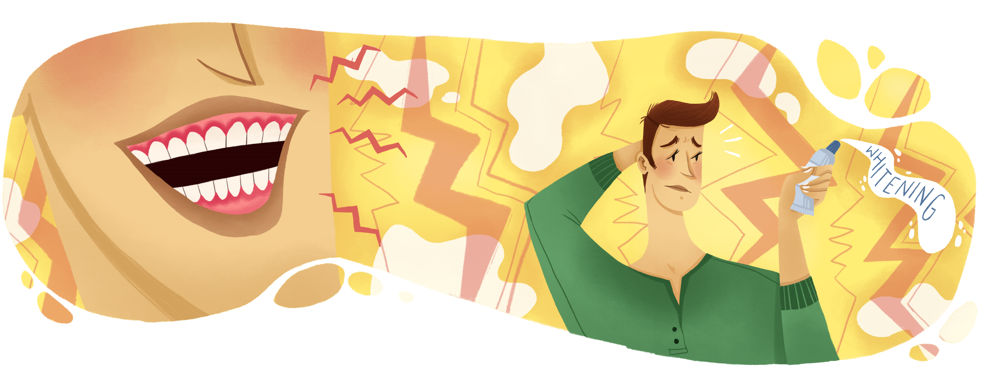Burn Gums With Teeth Whitening

The pursuit of a brighter, more radiant smile has led many to explore various teeth whitening options, from professional dental treatments to at-home kits and natural remedies. While the desire for whiter teeth is understandable, it’s crucial to approach this goal with caution, particularly when considering the potential risks to oral health, such as burning gums.
Gums, or gingiva, play a vital role in oral health, serving as a protective barrier around the teeth and helping to prevent the accumulation of bacteria and other harmful substances. However, the delicate balance of the gum tissue can be disrupted by certain teeth whitening methods, leading to irritation, inflammation, and even burning sensations.
One of the primary causes of gum burning during teeth whitening is the use of hydrogen peroxide or carbamide peroxide, common active ingredients in many whitening products. These chemicals can penetrate the gum tissue, causing irritation and potentially leading to conditions like gingivitis or gum recession. The severity of the burning sensation can vary, ranging from mild discomfort to severe pain, and may be accompanied by other symptoms such as redness, swelling, and bleeding.
Understanding the Risks
To minimize the risk of burning gums when whitening teeth, it’s essential to understand the potential hazards associated with different products and treatments. Here are a few key considerations:
- Concentration of Whitening Agents: Products with high concentrations of hydrogen peroxide or carbamide peroxide are more likely to cause gum irritation. The American Dental Association (ADA) recommends using products with concentrations that are deemed safe and effective.
- Application Method: The method of application can also impact the risk of gum burning. Trays, strips, and gels that come into direct contact with the gums can cause more irritation than other methods.
- Individual Sensitivity: Some individuals may be more sensitive to the ingredients in teeth whitening products, making them more prone to gum burning and other side effects.
Safe Alternatives and Precautions
For those seeking to whiten their teeth without risking gum health, several safer alternatives and precautions can be considered:
- Professional Dental Whitening: Consulting a dentist for professional whitening treatments can significantly reduce the risk of gum burning. Dentists can apply a protective barrier to the gums before the procedure and use customized trays that fit snugly around the teeth, minimizing contact with the gums.
- At-Home Whitening Kits with Low Concentration: Opting for at-home kits with lower concentrations of whitening agents can be a safer option. However, it’s crucial to follow the manufacturer’s instructions carefully and avoid overusing the product.
- Natural Whitening Methods: Certain natural methods, such as using baking soda and water or oil pulling with coconut oil, are gentle on the gums and can help maintain oral hygiene and whiten teeth over time. While these methods may not produce immediate results, they are safer and can be used in conjunction with other whitening treatments under dental supervision.
Prevention and Treatment of Gum Burning
If gum burning occurs due to teeth whitening, there are steps that can be taken to alleviate the discomfort and prevent further irritation:
- Discontinue Use: Immediately stop using the whitening product if gum burning or any other form of discomfort is experienced.
- Rinse with Warm Salt Water: Gargling with warm salt water several times a day can help reduce inflammation and kill bacteria.
- Apply Topical Creams: Over-the-counter topical creams or gels can be applied to the affected area to numb the pain and reduce inflammation.
- Consult a Dentist: It’s important to visit a dentist if the burning sensation persists or is severe. The dentist can assess the condition of the gums and provide appropriate treatment, including recommendations for safe whitening practices.
Conclusion
Achieving a brighter smile should not come at the cost of oral health. By understanding the risks associated with teeth whitening, particularly the potential for gum burning, individuals can make informed decisions about their whitening treatments. Whether opting for professional dental care, at-home kits, or natural remedies, prioritizing gum health is essential. Remember, a healthy, beautiful smile is not just about the color of the teeth, but also about the well-being of the gums and the entire oral cavity.
Frequently Asked Questions
What causes gum burning during teeth whitening?
+Gum burning during teeth whitening is often caused by the active ingredients in whitening products, such as hydrogen peroxide or carbamide peroxide, which can irritate the gum tissue.
How can I prevent gum burning when whitening my teeth?
+To prevent gum burning, consider professional dental whitening, use at-home kits with low concentrations of whitening agents, and follow the manufacturer’s instructions carefully. Natural whitening methods can also be a safer alternative.
What should I do if I experience gum burning after using a teeth whitening product?
+If you experience gum burning, discontinue the use of the product, rinse your mouth with warm salt water, and consider applying topical creams to alleviate the discomfort. It’s also recommended to consult a dentist for further assessment and guidance.
